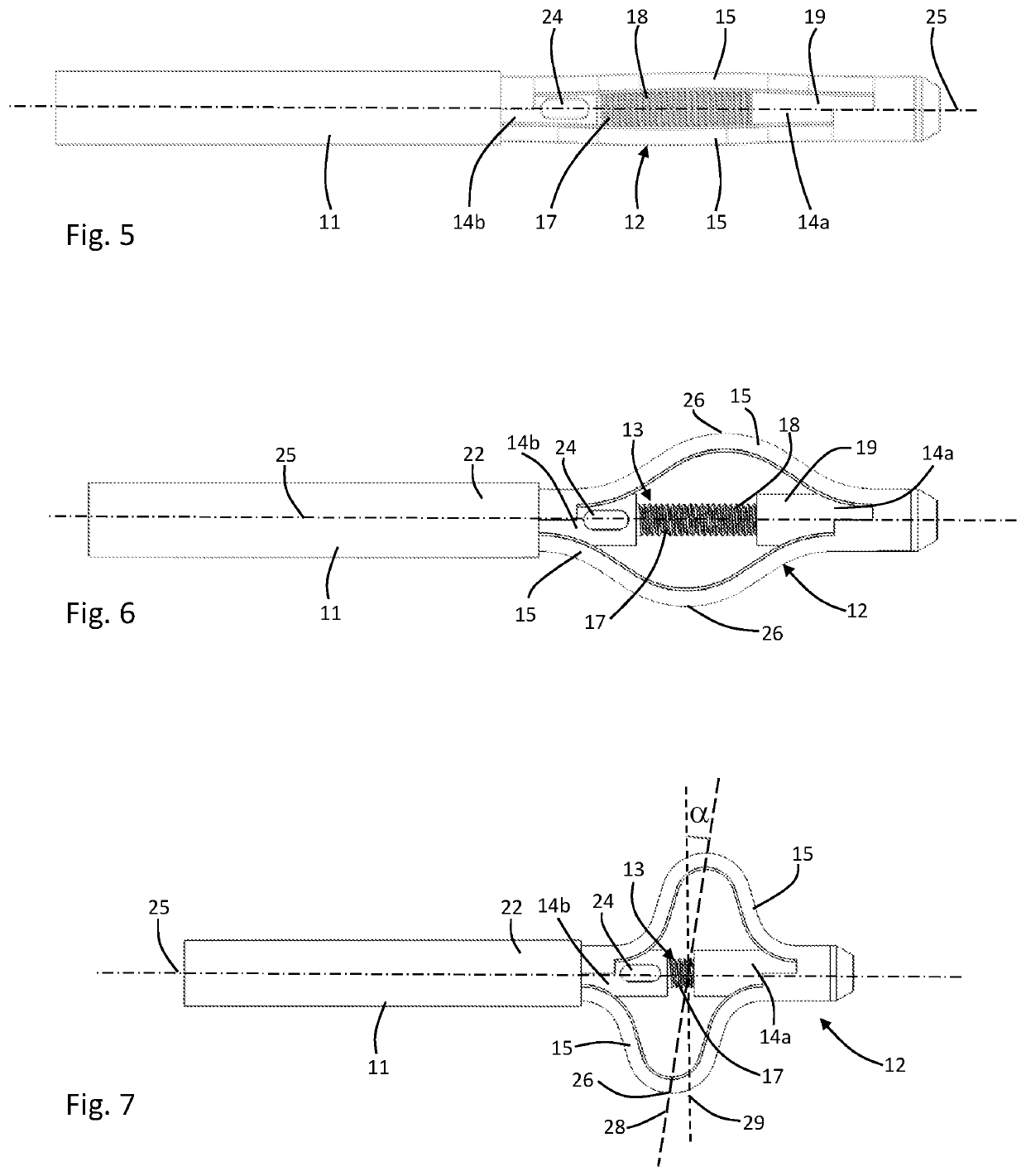Vertebral spacer
a technology of vertebrae and spacers, applied in the field of surgery, can solve the problems of inability to properly position the parts of the vertebrae, high manufacturing cost, and inability to achieve the effect of a simple and robust construction, precise and controlled adjustment of the opening
- Summary
- Abstract
- Description
- Claims
- Application Information
AI Technical Summary
Benefits of technology
Problems solved by technology
Method used
Image
Examples
Embodiment Construction
[0033]With reference to the drawings, the spacer 10 according to the present invention essentially comprises a tube 11, a spacer module 12 and an actuating system 13 of the spacer module.
[0034]In general, the spacer module 12 and the actuating system 13 are arranged at least partially within the tube 11. The actuating system 13, when actuated, is configured to move the spacer module 12 when the tube 11 is placed in a patient who has to undergo a vertebroplasty operation. This actuating system 13 can be actuated from outside of the patient's body and acts on the spacer module 12 which is inside the patient's body.
[0035]Referring to FIGS. 1 to 8, corresponding to a first embodiment of the spacer of the invention, the spacer module 12 according to the present invention has a substantially tubular shape. This spacer module 12 comprises a holding zone 14 at each of its ends and two blades 15 integral with these holding zones 14. The holding zone farthest from the end of the tube remainin...
PUM
 Login to View More
Login to View More Abstract
Description
Claims
Application Information
 Login to View More
Login to View More - R&D
- Intellectual Property
- Life Sciences
- Materials
- Tech Scout
- Unparalleled Data Quality
- Higher Quality Content
- 60% Fewer Hallucinations
Browse by: Latest US Patents, China's latest patents, Technical Efficacy Thesaurus, Application Domain, Technology Topic, Popular Technical Reports.
© 2025 PatSnap. All rights reserved.Legal|Privacy policy|Modern Slavery Act Transparency Statement|Sitemap|About US| Contact US: help@patsnap.com



